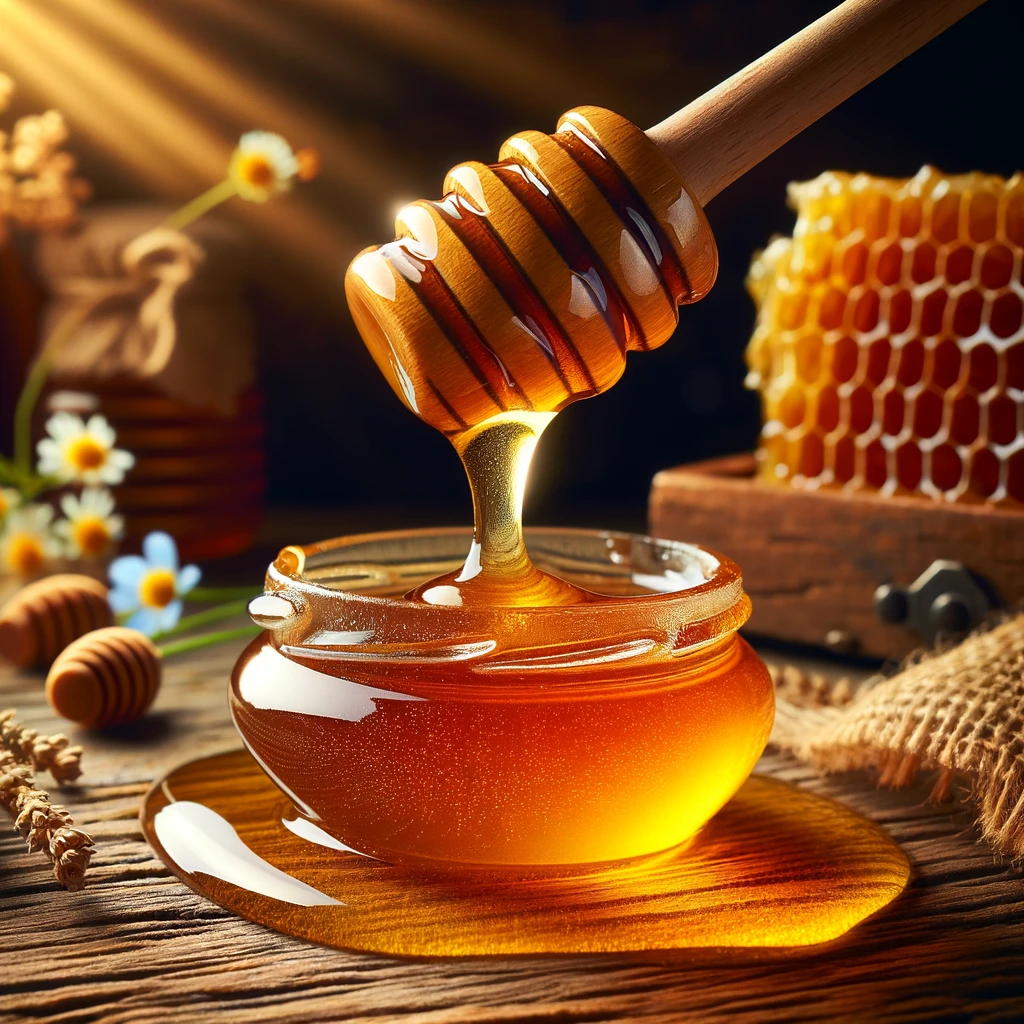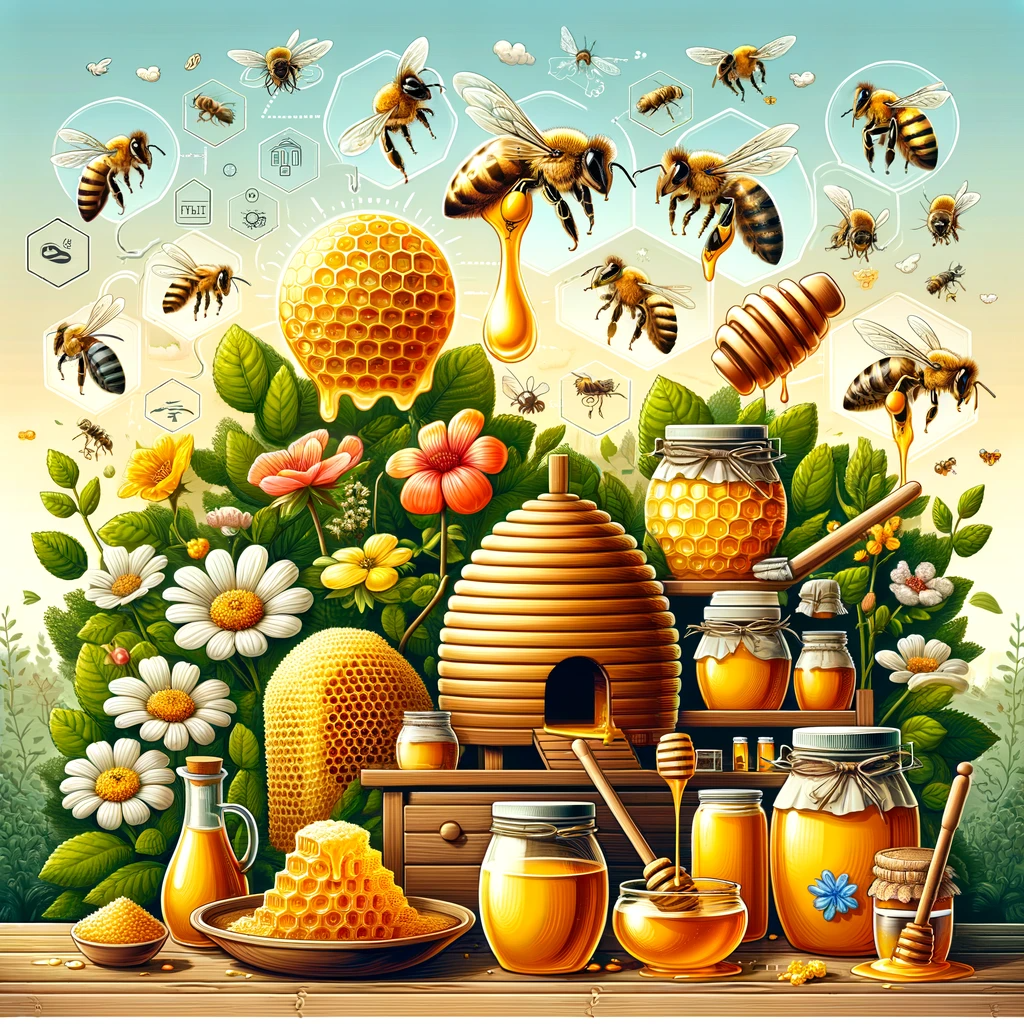
Honey, a sweet nectar produced by bees, has been enjoyed by humans for thousands of years. While honey is primarily known for its sweetness, it comes in a wide range of flavors and colors, depending on the flowers from which the bees collect nectar. In this article, we will explore the various varieties of honey, delving into their ingredients, flavors, and unique characteristics:
1. Floral Source
The flavor and composition of honey are primarily influenced by the types of flowers bees visit. Here are some of the most popular floral sources of honey:
Clover Honey
- Ingredients: Nectar from clover flowers.
- Flavor: Mild and sweet.
- Color: Light golden.
Acacia Honey
- Ingredients: Nectar from acacia blossoms.
- Flavor: Delicate and mild, with a hint of vanilla.
- Color: Nearly transparent.
Wildflower Honey
- Ingredients: Nectar from a variety of wildflowers.
- Flavor: Complex, with a mix of floral notes.
- Color: Can range from light to dark amber.
Orange Blossom Honey
- Ingredients: Nectar from orange tree blossoms.
- Flavor: Citrusy and fruity.
- Color: Light amber.
2. Specialty Honey
Apart from the commonly found floral source honey, some unique and exotic varieties offer distinctive flavors:
Manuka Honey
- Ingredients: Nectar from the Manuka tree in New Zealand.
- Flavor: Earthy and medicinal, with a hint of herbaceousness.
- Color: Dark amber.
- Unique Ingredient: Contains Methylglyoxal (MGO), known for its potential health benefits.
Lavender Honey
- Ingredients: Nectar from lavender flowers.
- Flavor: Floral and slightly herbal, with a soothing aroma.
- Color: Light to medium amber.
Chestnut Honey
- Ingredients: Nectar from chestnut tree blossoms.
- Flavor: Strong, bold, and slightly bitter.
- Color: Dark amber to brown.
- Unique Characteristic: Known for its thick, almost molasses-like consistency.
3. Climate and Geography
Honey flavor can also be influenced by the geographical location and climate where the bees collect nectar:
Alpine Honey
- Ingredients: Nectar from alpine meadows.
- Flavor: Fresh and floral, with a hint of alpine herbs.
- Color: Light to medium amber.
- Geographical Influence: Grown at high altitudes, which affects the floral variety available to bees.
Rainforest Honey
- Ingredients: Nectar from rainforest blossoms.
- Flavor: Rich and earthy, with tropical undertones.
- Color: Dark amber.
- Geographical Influence: Rainforest biodiversity impacts the variety of nectar sources available.
4. Processing Methods
The way honey is processed can also affect its flavor and characteristics:
Raw Honey
- Processing: Minimal processing, usually only filtered to remove large debris.
- Flavor: Maintains the natural flavors and aromas of the floral source.
- Texture: Often crystallizes over time.
Filtered Honey
- Processing: Fine filtration to remove all impurities and pollen.
- Flavor: Mild and clear, but lacks the complexity of raw honey.
- Texture: Remains liquid for longer.
Creamed Honey
- Processing: Controlled crystallization of honey to create a creamy texture.
- Flavor: Smooth and spreadable, with a consistent taste.
- Popular for: Spreading on toast or mixing into beverages.
5. Health Benefits
Different varieties of honey may offer unique health benefits due to their varying compositions:
Manuka Honey
- Benefits: Potential antibacterial properties due to high MGO content.
- Uses: Often used for wound healing and soothing sore throats.
Chestnut Honey
- Benefits: Contains antioxidants and may have anti-inflammatory effects.
- Uses: Popular in traditional medicine for respiratory issues.
Lavender Honey
- Benefits: May have calming and sleep-inducing properties.
- Uses: Consumed before bedtime or added to herbal teas.
FAQs
Are there different Flavours of honey?
Indeed, there are a myriad of flavors of honey, which distinctly vary depending on the types of flowers that the bees frequent for nectar. Firstly, common flavors include clover, which is widely appreciated for its mild, sweet taste. Additionally, orange blossom honey offers a refreshingly citrusy flavor, making it a favorite among many. Furthermore, wildflower honey, as the name suggests, comes from the nectar of various wildflowers, resulting in a complex and variable taste that can differ greatly depending on the specific wildflowers in bloom. Moreover, buckwheat honey is known for its strong, robust flavor, which is darker and richer than most other honey varieties. Lastly, eucalyptus honey stands out with its unique herbal flavor, adding a hint of menthol. Each of these flavors provides a distinct tasting experience, demonstrating the fascinating diversity found within the world of honey.
What are the 5 forms of honey?
The 5 forms of honey are:
- Liquid honey: The most common form, directly extracted from the honeycomb.
- Creamed (or whipped) honey: A process controls the crystallization of honey to produce a smooth, spreadable texture.
- Comb honey: Honey sold as it exists in the original beeswax comb, completely unprocessed.
- Cut comb honey: Liquid honey that has pieces of the wax comb suspended in it.
- Dried (or granulated) honey: Refers to honey manufacturers dehydrate into a granular or powdered form, commonly used in baking.
How are different flavors of honey made?
Various flavors of honey are crafted depending on the assortment of flowers from which the bees gather nectar. Significantly, each type of flower imparts a distinctive flavor profile to the honey. Consequently, beekeepers might position hives adjacent to particular types of flowers if they aim to specifically influence the honey’s flavor. Alternatively, they may permit bees to roam in diverse environments, thereby ensuring a more intricate taste. This strategic placement of hives serves to either harness the unique essence of a single flower type or to amalgamate the subtle nuances of multiple sources, thus enriching the honey’s taste palette. Ultimately, the choice between these approaches depends on the desired outcome, whether it be a honey with a singular, distinct flavor or one that encapsulates a broad spectrum of tastes.
Which Flavour honey is best for health?
When exploring the vast health benefits of honey, one must understand that these benefits can vary greatly based on its origin and processing method. Firstly, experts generally recognize that darker honeys, like buckwheat honey, contain higher levels of antioxidants and beneficial compounds. Likewise, Manuka honey from New Zealand stands out for its potential health benefits, especially for its antimicrobial properties.
Moreover, it’s essential to note that the processing method plays a significant role in the preservation of these health benefits. Raw and unprocessed honey, for instance, retains a higher level of antioxidants and nutrients compared to its processed counterparts. Therefore, when selecting the best honey for health purposes, it is advisable to opt for one that is raw and minimally processed, regardless of its specific flavor.
Furthermore, transitioning to a broader perspective on honey, it’s fascinating to explore the vast diversity this natural sweetener has to offer. The world of honey is incredibly varied, with each variety reflecting a unique blend of flavors and ingredients influenced by its floral source, geographical location, and processing method. Whether your preference leans towards a mild and sweet flavor or you’re intrigued by a bold and exotic taste, there is undoubtedly a honey variety that can cater to every palate and dietary preference.
Conclusion
In conclusion, as we delve into the intricate world of honey varieties, it becomes clear that the choice of honey extends beyond just taste preferences. Each variety offers a unique combination of health benefits, influenced by its origin and processing. So, the next time you find yourself drizzling honey over your yogurt or incorporating it into your tea, take a moment to appreciate the rich diversity and healthful attributes of the different honey varieties that are available for exploration and enjoyment. This appreciation not only enhances your culinary experience but also contributes to a healthier lifestyle choice, embracing the natural goodness that honey, in its purest form, has to offer.
